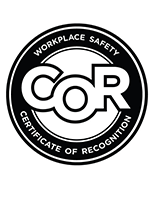Posted: Nov 1

Working the night shift presents unique safety challenges that go far beyond what daytime workers face. From battling fatigue and reduced alertness to navigating visibility issues in low-light conditions, night shift employees encounter circadian-related risks that can significantly impact workplace safety. That's where specialized onsite training courses come in, offering targeted solutions that address these specific challenges head-on. If your organization runs night operations and you're looking to reduce circadian-related safety risks, get in touch with MI Safety to discover how our customized training programs can protect your night shift workers.

Circadian-Related Risks Addressed in Specialized Onsite Training Courses
Night shift work disrupts the body's natural circadian rhythm, creating a cascade of safety risks that traditional training programs often overlook. Effective programs designed for night shift operations focus on these biological realities, helping workers understand how their bodies respond to working against their natural sleep-wake cycle. These specialized courses address the increased likelihood of microsleep episodes, delayed reaction times, and impaired decision-making that commonly occur during overnight hours.
Unique Hazards of Night Operations and Training Solutions
Night shift operations face distinct hazards that require targeted training approaches. Reduced lighting conditions increase the risk of
slips, trips, and falls, while equipment that may seem familiar during daylight can present new challenges in darkness. Training for night
shifts teaches workers how to adapt their safety practices to these conditions, emphasizing the importance of enhanced situational awareness
and modified work procedures that account for reduced visibility and potential cognitive impairment.
Fatigue Management in Night Shift Onsite Training Courses
Fatigue represents one of the most significant safety risks for night shift workers, and effective programs address this challenge comprehensively. These courses teach workers to recognize early signs of fatigue, understand the difference between tiredness and dangerous levels of impairment, and implement personal fatigue management strategies. Quality training also educates supervisors on how to identify fatigued workers and create workplace policies that support fatigue prevention rather than simply managing its consequences.
Addressing Reduced Alertness Through Targeted Training
Reduced alertness during night hours is a physiological reality that training programs need to address practically. These sessions teach workers specific techniques for maintaining vigilance during low-alertness periods, including environmental modifications, task rotation strategies, and communication protocols that help maintain team awareness. Effective programs also cover the science behind circadian rhythms, helping workers understand why they feel less alert at certain times and how to work with their biology rather than against it.
Visibility Issues and Safety Protocols in Onsite Training Courses
Low-light conditions create unique safety challenges that require specialized training approaches. Programs for night shifts focus on proper
lighting techniques, enhanced visual scanning procedures, and adapted safety protocols that account for reduced visibility. These sessions
teach workers how to position themselves and their equipment for optimal visibility, how to use lighting equipment effectively, and how to
communicate more deliberately in environments where visual cues may be limited.

Minimizing Operational Disruption During Onsite Training Courses
One of the biggest challenges in implementing night shift training is maintaining operational continuity while ensuring thorough safety education. Successful programs use staggered training schedules that allow core operations to continue while small groups receive focused instruction. These courses are designed to be modular, allowing workers to complete sections during natural breaks in operations or shift transitions without compromising productivity.
Optimal Timing for Night Shift Training Sessions
Timing is crucial when delivering training to night shift workers. The most effective programs schedule sessions during periods when workers' alertness levels are naturally higher, typically early in the shift before circadian low points set in. These programs also account for individual differences in circadian rhythms, offering multiple training times to accommodate workers who may be better adapted to night schedules.

PPE Adjustments for Low-Light Conditions Training
Personal protective equipment requirements change significantly in low-light conditions, and comprehensive training addresses these modifications thoroughly. Workers learn how to select and properly use enhanced visibility clothing, adjust helmet-mounted lighting systems, and maintain equipment that may behave differently in nighttime conditions. These programs also cover the importance of regular equipment checks, as equipment failures can have more serious consequences when visibility is already compromised.
Strategic Caffeine Use Protocols in Onsite Training Courses
While caffeine can be a valuable fatigue countermeasure, improper use can actually increase safety risks. Professional training teaches workers about strategic caffeine timing, appropriate dosages, and the importance of avoiding caffeine dependence. These programs provide practical guidance on when caffeine use is most effective and when it should be avoided, helping workers make informed decisions about this common alertness aid.
Napping Strategies and Fatigue Countermeasures
Strategic napping can be an effective fatigue countermeasure when properly implemented. Training programs teach workers about optimal nap
timing, duration, and recovery periods to maximize alertness benefits while minimizing grogginess. These sessions also cover other fatigue
countermeasures including light exposure, physical activity, and nutrition strategies that support sustained alertness throughout night
shifts.

Incident Reduction Data from Night Crew Training Programs
Organizations that implement comprehensive night shift training consistently see measurable improvements in safety performance. Studies show that fatigue-focused programs can reduce night shift incidents by up to 25%, with the most significant improvements occurring in areas directly related to circadian-related risks such as attention lapses and decision-making errors.
Quantifying Safety Improvements Through Specialized Onsite Training Courses
The benefits of night shift training extend beyond simple incident reduction. Organizations report improvements in near-miss reporting, increased safety awareness, and better overall safety culture among night shift workers. These programs also contribute to reduced absenteeism, lower turnover rates, and improved worker satisfaction, creating value that extends well beyond direct safety metrics.
Transforming Night Shift Safety Culture Through Targeted Training
Night shift safety doesn't have to be an uphill battle against biology. With properly designed onsite training courses that address circadian-related risks head-on, organizations can create safer work environments that protect workers while maintaining operational efficiency. The key is implementing training programs that understand the unique challenges of night work and provide practical, science-based solutions that workers can apply immediately. Ready to transform your night shift safety culture with specialized training? Contact MI Safety today to learn how our expert-designed programs can help reduce circadian-related safety risks and protect your most valuable asset – your workers.






